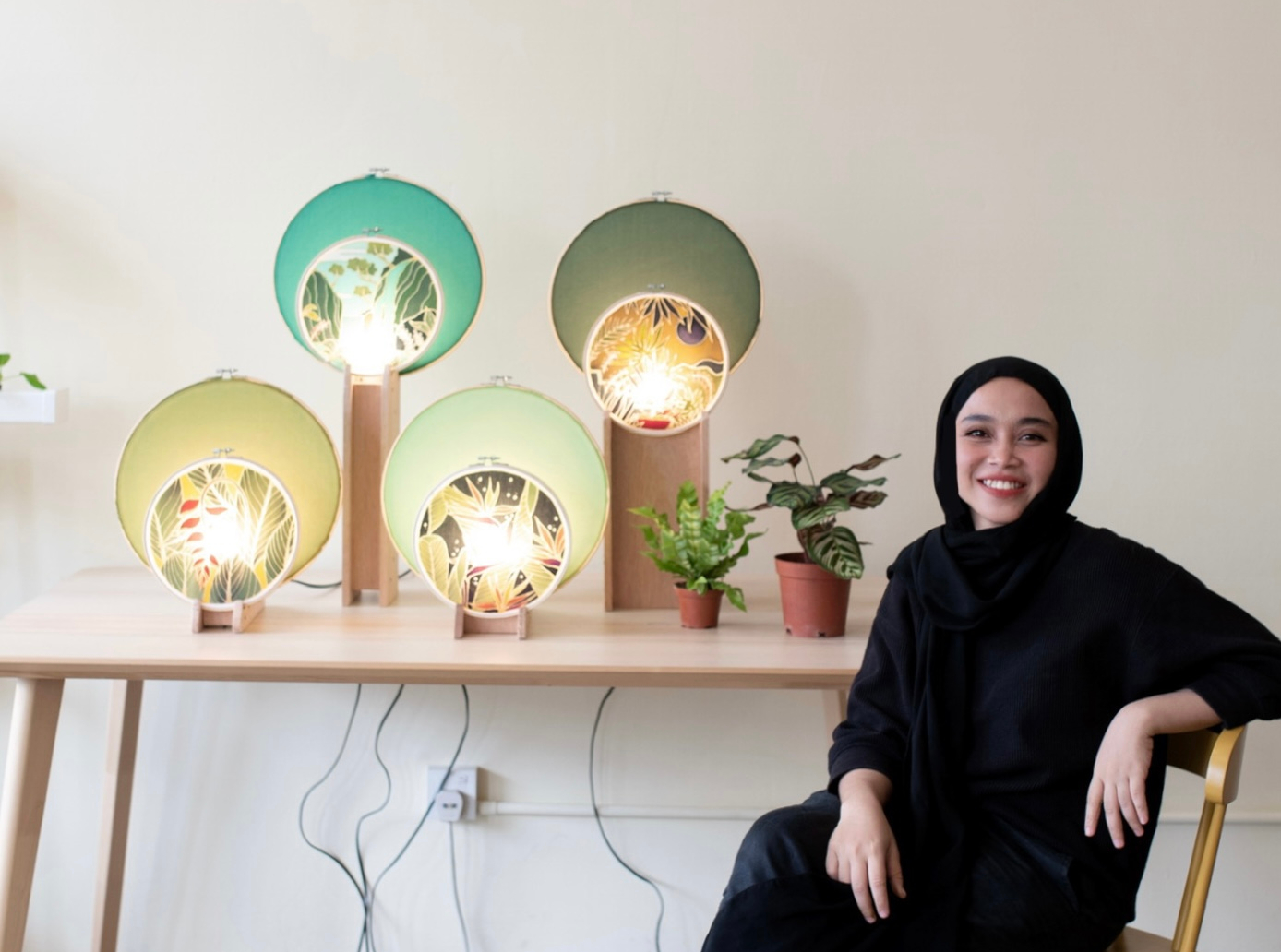For Farah Mohan, she never really planned to become an artist – let alone a batik artist – until just last year when she realised that her audience started to calling her an artist, and purchasing her dreamy, unique artwork. That was the pivotal moment when Farah realised that she could actually make it as an artist – which would then steer her towards further explorations on how to make batik art more interesting and appealing to the modern community.
“However, when I look at other batik masters and their years of experience in this industry, I realise I still have a long way to go and all I can really do is to just keep working hard at this,” she expresses humbly.
As the daughter of a seamstress and a bladesmith, Farah developed an appreciation in fabrics as well as traditional crafts at an early age. Though she only decided to pick up batik after graduating in architecture in 2014, starting out with self-taught methods before getting formal lessons from a batik master.

“I thought of batik as a perfect blend of fabric and traditional crafts – where I can also make use of design skills and aesthetic influences I learnt from architecture,” she shares.
A blend of art styles
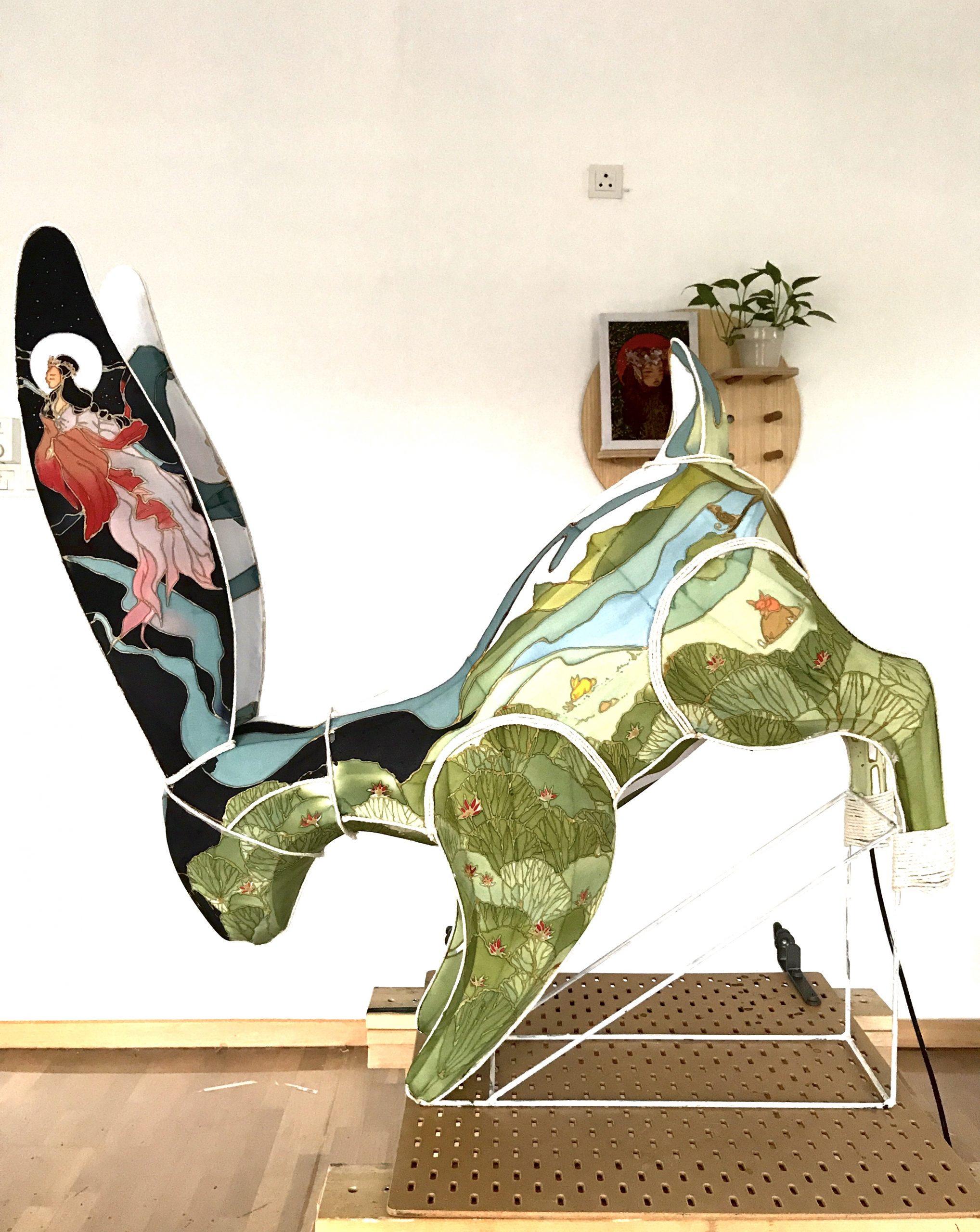
Just like how our country is made up of a blend of cultures, Farah’s works, which can be found on Instagram as Novak Batik, are an amalgamation of styles – featuring designs and textures that aren’t typically found in traditional batik. Her creations often have a romantic and otherworldly presence about them, while her constant fondness for watercolour can be seen in the painting techniques used to achieve a dreamlike quality.
An appreciation for Art Deco and Art Nouveau is reflected especially in her early designs – with the use of straight lines and undulating waves. However, these days, you’ll no doubt come across her profile when scrolling through Instagram, and stumbling on a progress video or two that features more contemporary designs, such as her Studio Ghibli series.

“I am usually inspired by stories, folktales, or by emotions. I’m currently still working on a series inspired by a forgotten Malay folktale that I hope will be released some time this year,” she shares. “My favourite work at the moment has to be my painting titled ‘Last Day of Rue’. There was a time when I felt overwhelmed and was down for a few months, and I wanted to express how I was feeling so I painted a series called, ‘Before Dawn’. It consisted of the four ways – portrayed through 4 paintings – of getting myself out of that negative feeling which really helped me mentally and emotionally.”
The new Batik wave
While many batik artisans hold pride over the preservation of their traditional craft, other contemporary artists such as Farah have decided to make batik more accessible to the younger generation – whether it’s by tweaking certain techniques or transforming the design altogether.
You may also like: Real or fake – How to identify authentic batik.
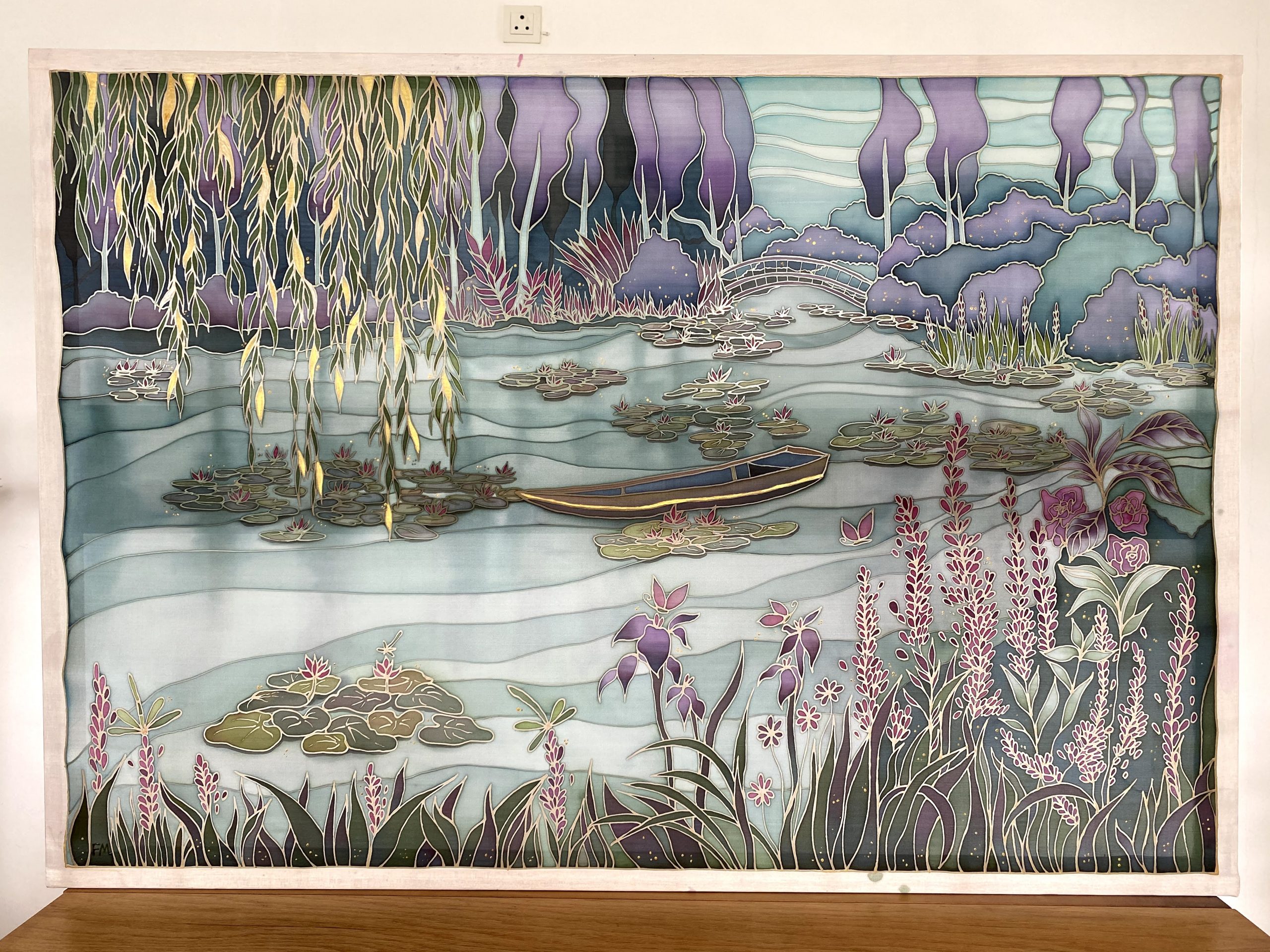
“I think the biggest thing I’m very proud of within my own practice is being able to let my audience see how batik can be used and expressed,” Farah shares. “I think as a community we are so used to seeing batik as something like formal wear with traditional floral patterns. So I think my work reflects that we can do more with it and we can take it to another level if we keep on improvising.”
Farah tells of a time when she became a “client” for a group of University of Malaya architecture Year 2 students, for their project in designing a local artisan’s studio. Upon being presented with the designs, she found herself intrigued and inspired at how things could be designed for batik makers. It proved to be an eye-opener to her, in witnessing the younger generation regain interest in batik, providing a beacon of hope that traditional crafts such as batik can continue progressing in the future.
How an artist adapts
One of the ways Farah has made batik more approachable and accessible is by creating and selling Batik DIY Kits, where people can purchase design templates on bamboo rings alongside colour powders and a colour-making instruction card to put their own spin on Farah’s designs. The idea for these kits came about during the onset of the Covid-19 pandemic, when lockdowns prevented her from holding physical batik workshops.
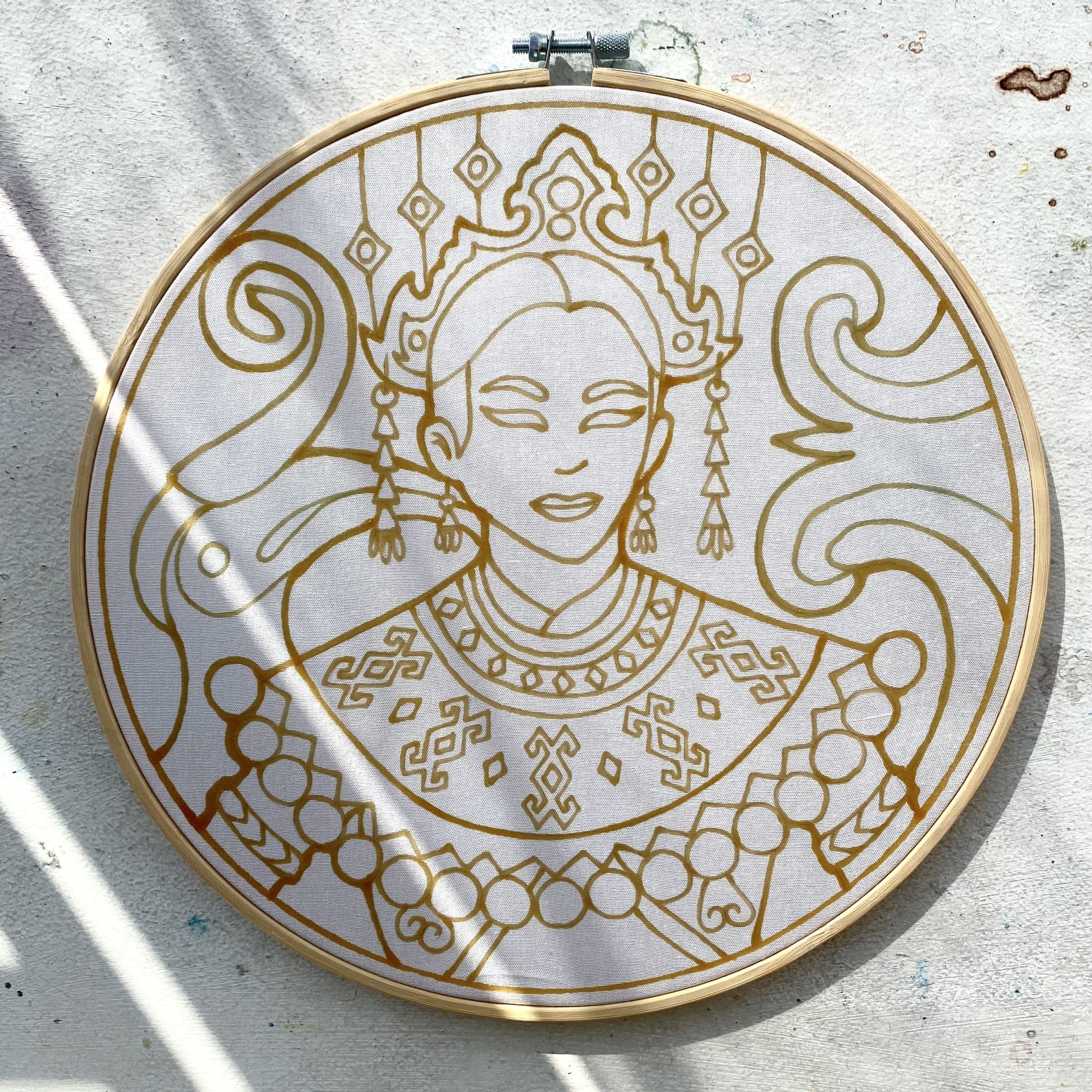
To pass time, she ventured into art challenges such as KL Sketch Nation’s Ramadan Challenge, where fellow creatives had to come up with a piece everyday for the entirety of Ramadan. As Farah tried to complete as many challenges as she could, she also documented her progress through video, which garnered a lot of attention and inquiries online, leading to her decision to create the DIY kits. Since then, she’s been playing a balancing act between selling DIY kits on Shopee Malaysia and Singapore, commission work, as well as custom-made orders.
“Lockdown has been difficult, especially when I’m trying to finish orders for DIY kits, but I do find doing my own art piece at least once a month helps. That, and also gardening in our backyard has really helped me get through lockdown.”
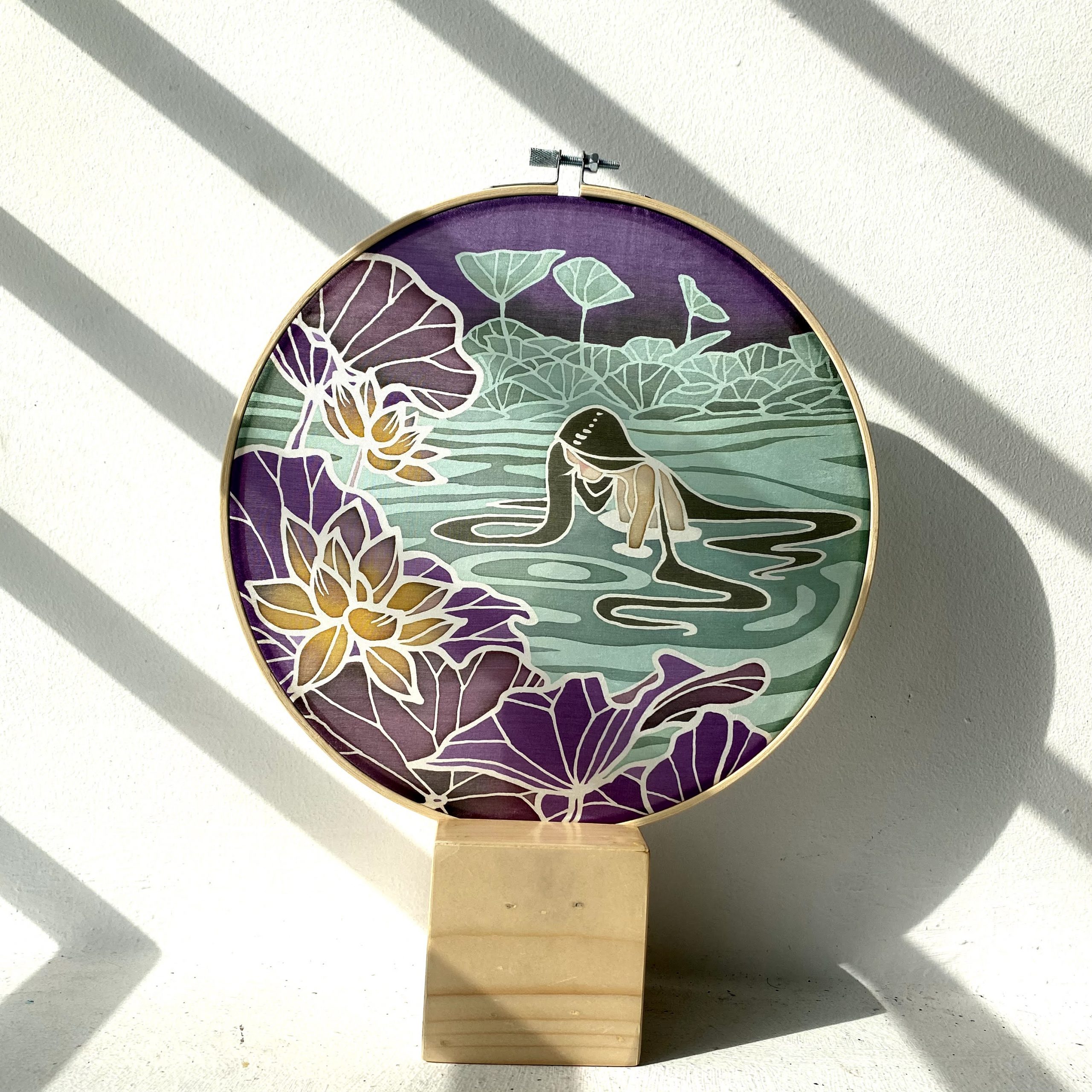
In the future, Farah hopes to become a stronger creative – aiming to become a professional batik artist, gain greater recognition for her work, and being able to travel.
“We have plans to launch new products such as Batik Starter Kits, art prints, and more!” she enthuses. “I’d also love to work in documenting and writing books about different batik workshops around the world to see their process, as different countries have different tools and techniques of batik making!”
To see more of Farah’s work, visit her Instagram page @novakbatik. Her Batik DIY Kits can be purchased here.
Photos: Farah Mohan / Novak Batik




